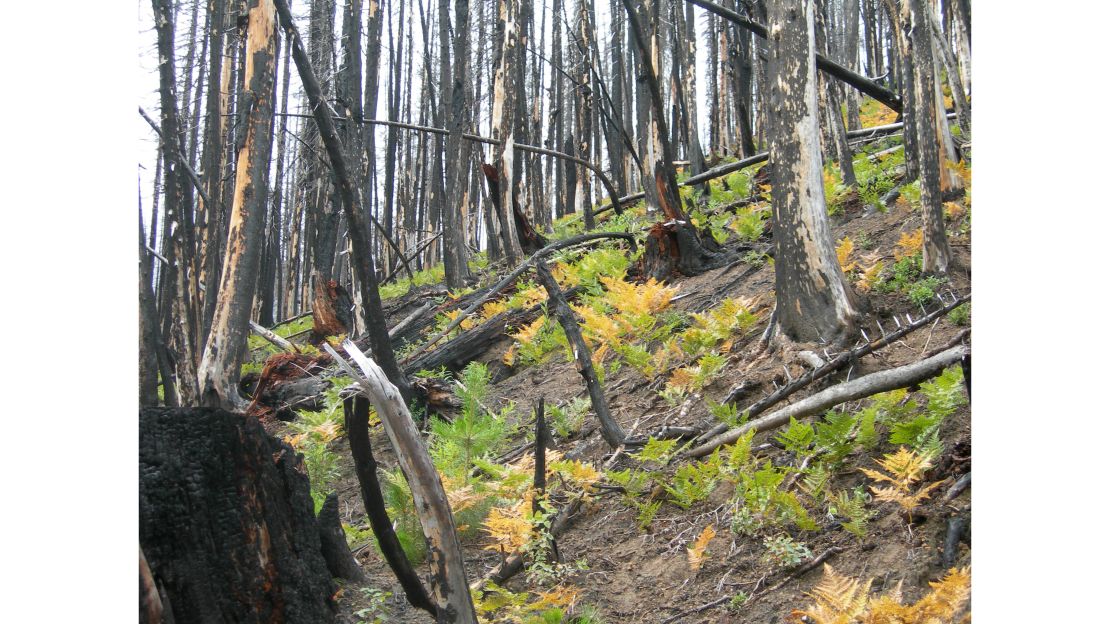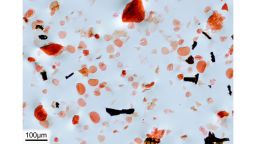Story highlights
Ferns and ground-dwelling birds survived the fifth mass extinction, according to a new study
All of today's birds descended from the survivors
When an asteroid hit the Earth 66 million years ago, it unleashed a violent force millions of times more massive than an atomic bomb. Known as the Cretaceous-Paleogene fifth mass extinction event, it wiped out three-quarters of all plant and animal life on Earth – including the dinosaurs.
A new study suggests that the impact also decimated Earth’s forests, leading to the extinction of all the birds that lived in trees. But in a twist, the plucky survivors in the fiery aftermath proved to be ferns and hardy, ground-dwelling birds.
The study was published Thursday in the journal Current Biology.
Scientists also refer to the event as the K-Pg Chicxulub impact because it created the Chicxulub crater in what’s now Mexico. During the initial impact, shock waves flattened trees in massive waves within a radius of nearly 1,000 miles. But what followed was probably even worse for the initial survivors of this apocalyptic event.
The intense heat generated by the impact would have sparked global wildfires, ravaging what was left of the forests. Vapor, rich in sulfates, triggered acid rain. Soot clogged the atmosphere, which put a damper on the photosynthetic activity that plants needed to survive or grow back. This lasted years, which kept the global climate from cooling.
Not only did the forest canopies collapse, they wouldn’t be able to regrow. Any birds that roosted or perched in trees would’ve been homeless. The chance of surviving the asteroid was already slim for tree-dwelling birds; eliminating their habitat ensured extinction.
Researchers from the United States, England and Sweden studied the fossil record from North America to New Zealand, looking closely at charcoal remains of trees, fossilized pollen and fern spores, and bird fossils. The combination of samples provided a bigger picture of what the world was like during the aftermath of the impact.
“To me, it’s really exciting to see that combining insights from the bird fossil record and the plant fossil record can allow us to piece together a major macroevolutionary story that took place over 66 million years ago,” Daniel Field, lead study author and an evolutionary paleontologist at the University of Bath’s Milner Centre for Evolution, wrote in an email. “It speaks to the power of collaborative science, and the importance of the fossil record for understanding the life in the modern world.”
A perilous life on the ground
The ground-dwelling birds that survived would not have had an easy existence. It’s likely that smaller ground-dwelling birds experienced a catastrophic loss. They probably lived off the hardiest grains and seeds that endured the impact, as well as insects. Many small-bodied birds today eat insects, and this trait can be traced to the surviving birds 66 million years ago.
“My guess is that any surviving birds would have been fairly skinny for a few years in the immediate aftermath of the asteroid impact,” Field said.
Their fossils reveal that the ground-dwelling birds had long, sturdy legs, like those of a kiwi or an emu, nothing like the delicate legs of perching birds.
They can be compared to today’s tinamous, small-bodied, flying and ground-dwelling relatives of ostriches and emus that live in Central and South America. Being small, flying and living on the ground were probably all features that would have favored survival across the mass extinction event, Field said.

But the ground-dwelling birds that survived carried a lasting legacy beyond the tinamous.
“Today, birds are the most diverse and globally widespread group of terrestrial vertebrate animals – there are nearly 11,000 living species,” Field said in a statement. “Only a handful of ancestral bird lineages succeeded in surviving the mass extinction event 66 million years ago, and all of today’s amazing living bird diversity can be traced to these ancient survivors.”
Ferns were also the big survivor, as opposed to trees, because their tiny, single-celled spores dispersed quickly. Spores are much smaller than seeds, and they can easily grow in a damp area. Ferns are usually among the quickest plants to return after natural disasters.

“The spores are tiny – you could fit four across a single strand of your hair,” Regan Dunn, study co-author and paleontologist at the Field Museum in Chicago, said in a statement.
So how long would it take the ferns to thrive? They can colonize an area quickly, but it still takes time.
“It may have taken on the order of 100 years for the ‘fern spike’ to begin, and about 1,000 years for forest communities to rebound,” Field said. “Once forests were back, the ancestors of today’s modern tree-dwelling birds could – and did – move into the trees. By a couple of millions of years after the asteroid impact, we have direct evidence of arboreal fossil birds.”

Past could mirror the future
Studying whole paleoecosystems shows how life on Earth has evolved through all the trials and tribulations of the past, Dunn said in an email.
But it’s also incredibly important to study what happened during the fifth mass extinction because many scientists believe we’re entering the sixth mass extinction.
“Human activity is causing deforestation on a massive scale,” Field said. “We know that the diversity of bird communities is impacted by the availability of forests – when forests are cut down in favor of, for example, palm oil monoculture, bird diversity is slashed. It’s probable that, if this kind of deforestation continues unabated, it will leave an indelible signature on the evolution of birdlife.”
Dunn added that “By studying this event, we learn about what happened to biodiversity in the past following destruction of Earth’s ecosystems and how long it took for biodiversity to recover. On a human time-scale, recovery is very long indeed. We need to take these lessons to heart and act now to preserve today’s profound biodiversity.”





































































































































































